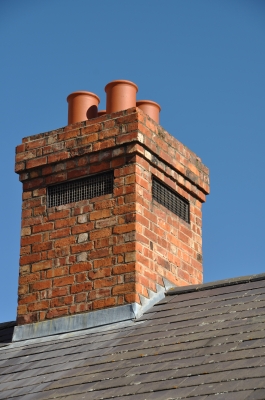Due to the construction materials and furniture types in newer homes, families have much less time to escape from a house fire than in the past. 30 years ago it took 17 minutes to fully engulf the average home. Today, when a home fire breaks out the average family has just 3 minutes to safely escape.
According to Ready.gov, “Each year more than 2,500 people die and 12,600 are injured in home fires in the United States, with direct property loss due to home fires estimated at $7.3 billion annually. “
Fortunately, many of these deaths and losses from house fires are preventable.
One way to keep your family safe from injury or property loss is to have your chimney inspected and cleaned. Here’s a brief look at why regular cleanings are so essential as a homeowner.
How often should I have my chimney inspected?
The National Fire Protection Association Standard 211 is clear that, “Chimneys, fireplaces, and vents shall be inspected at least once a year for soundness, freedom from deposits, and correct clearances. Cleaning, maintenance, and repairs shall be done if necessary.”
However it’s important to note that this is once a year, at minimum. In cold weather climates where fireplaces get more use, even a fraction of an inch of build up can be dangerous.
If your fireplace doesn’t see much use, it’s still important to conduct an annual inspection. Animals seeking shelter are known to build nests in the flue, making it dangerous to use, and just a small amount of build up could drastically impact the structural integrity of your chimney and cause it to deteriorate.
How do I know if I need to get my chimney swept?
If you suspect an animal has taken up residence in your chimney, best to call a chimney and wildlife specialist. Homeowners should also carefully monitor their chimneys for soot or creosote.
To check the interior of your chimney, put on protective gear like a dust mask and goggles. Next, take a flashlight to the shaft and use your fireplace poker or other long metal object to scratch the interior.
- Light color soot that is very thin, your chimney is safe.
- Black granular soot can be addressed with a chimney brush.
- Creosote build up that functions like tar and is 1/8 in thick needs to be cleaned by a professional.
- Shiny creosote lining your chimney is extremely dangerous. Even a 1/4 in film could easily ignite a fire. Do not use your fireplace until clean by a professional chimney sweep.
Why is cleaning my chimney so important?
When you build a fire, the wood that is burned may not disintegrate completely. This coupled with a lack of oxygen creates smoke that’s rich with unburned tar vapors. Over the course of a season these can condense and adhere to the inside of your chimney flue. This potentially deadly build up, known as creosote, can lead to house fires and cause significant damage to your chimney if not regularly addressed.
Again, based on guidance from the Chimney Safety Institute of America, open masonry fireplaces should be immediately cleared once sooty build up reaches one eighth of an inch. `
Ultimately, though it’s possible to complete some lighter jobs yourself, for peace of mind removing creosote build up or animal habitats from your chimney should be done by a professional certified by the Chimney Safety Institute of America. Their understanding of different structures and building codes can help you identify deterioration or venting issues before they become serious problems.
Suspect an issue or want to make sure your chimney is in top shape before winter hits? Contact the Dallas chimney and wildlife specialists.







